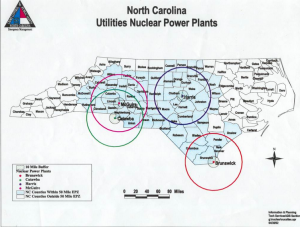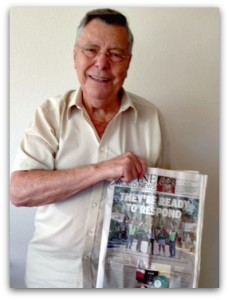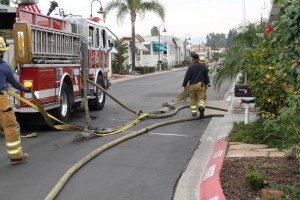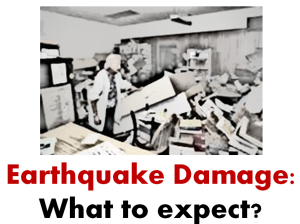Solar Security Lights — Do they work?
Worried about someone lurking in the shadows?
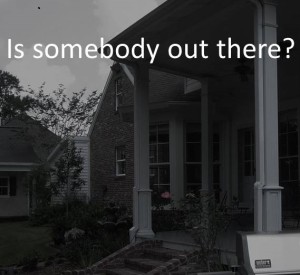 We’re known as the “Survival People” on our block, so it’s not uncommon for people to stop and ask for our opinions about anything connected to survival, which seems to include security.
We’re known as the “Survival People” on our block, so it’s not uncommon for people to stop and ask for our opinions about anything connected to survival, which seems to include security.
Last week we got asked TWICE:
“What outdoor lighting do you recommend for security?”
We’ve written about this topic before, but the questions pushed us to do more research and ask our own questions, so before we give any answer, here’s more of what we’ve learned.
Question 1. Do bad guys prefer to operate in the dark?
According to all the stories we’ve read, and we’ve read a lot of them, the simple answer is, “No.”
In fact, there are many reports of cities or neighborhoods in both the U.S. and other countries where street lighting was turned off – to save money, usually – and street crime went DOWN. Why? Apparently bad guys don’t like tripping over things in the dark any more than you do.
And when they use a flashlight, it’s immediately noticeable.
Question 2. So does outdoor lighting actually encourage bad guys?
That depends. Lights that are on all the time give bad guys the ability to see what they are doing and get it done more easily.
However, if someone is watching the premises, and sees suspicious activity and acts quickly to stop it, then the lighting is useful. The key is to have that alert human presence.
At your house or business, who is keeping watch at night? Are they watching all night?
Question 3. What about motion activated lights?
Now we are getting somewhere. A light on all the time is predictable and becomes unremarkable. When a light goes on suddenly, it is startling – and noticeable. Anyone within sight of the light is going to look to see what set it off.
So from a security standpoint, motion activated lights are the obvious choice.
Here’s what we have at home.
Now at our house, we actually DO have a light that burns all night. It’s on the porch and is designed to light the steps for us and for visitors. It’s a hardwired fixture with energy-efficient LED bulb, and we have checked to be sure our neighbors aren’t bothered by it. The bulb has lasted for years.
We have hardwired motion sensor lights where we park the car. They make it easy for us to get to and from the backdoor and into and out of the car.
Finally, behind the house, we have solar powered motion-activated lights. When they come on at night, we are awakened instantly and are able to look out to see what may have set them off. (Usually we can’t tell! Perhaps it’s a bird flying by. Occasionally we suspect an animal like a possum or raccoon. We haven’t seen any people crossing the backyard, yet.)
One of these lights actually has an audible alarm that can be turned on or off, too.
If you’re shopping for lights, here are some recommendations and suggestions about what to look for.
Recommendations for Solar Powered Lights
We started years ago with simple battery-operated lights. While they were easy to install, they seemed always to be dim and dying. So, we quickly turned to hard-wired lights. They work great but you need a ladder, patience and some handy-man smarts to install them.
When solar powered lights came on the scene, we were thrilled. Particularly since we live in Southern California!
Solar lights are either one self-contained unit (solar panel + storage battery + light itself) or have separate components: solar panel (that must be mounted where it gets sun) connected via a thin wire to the actual battery + lighting fixture.
Whether you select the self-contained unit or the component unit depends on where you’re installing the light and where the sun is.
Over the years we have tried small, inexpensive solar-powered lights and moderately priced ones and have concluded that you pretty much get what you pay for. You can get great deals at Amazon, where, as you know, we are affiliates.
Here are two lights that we really like. Click on the images to get all details.
This Litom Bright 60 LED Solar Powered Security Light seems to be top of the line in its price range (around $40). We have found it to be as bright as we need, and some of the reviewers at Amazon say that it is brighter than any others they have tried! This light is also waterproof, essential for an outdoor fixture.
The best part is how adjustable the light is. You can set it for dim or strong, set it for always-on or motion-activated, and you can adjust the “activation” area as well as the “lighting” area. Really, it ought to work for whatever you need!
Read the reviews at Amazon, and they will give you more ideas about installing and using the light. (If you want a white finish, take a look at the Sunforce 82080 80-LED Solar Motion Light model. It costs within a dollar of the Litom model.)
The second recommendation is for a light made by the same company. The Litom 20 Big LED Solar Sensor Powered Wall Light is smaller, more compact, and even brighter! (And less expensive — around $25.) Many of the Amazon reviewers say that they got several in order to cover different areas of their property. Last time I looked, you could purchase packs of 4 for a discounted price.
As I wrote this, Litom was offering some special deals on Amazon. (Scroll down on the page below the photos.) And different sellers were charging quite different prices! So take the time to shop!
To get details and current prices, click on the images.
To summarize.
Lighting alone will not deter a determined bad guy. But good lighting can make it safer for you and visitors, and motion-activated lighting can cause an unwanted visitor to change plans.
Let us know your experiences with lighting!
Virginia
Your Emergency Plan Guide Team
We have full reviews of several popular emergency items. See all our product reviews and recommendations here.



 If you think you are already prepared, use this list as a quick check. If you suspect you’re missing a few things, use the list to fill in the gaps.
If you think you are already prepared, use this list as a quick check. If you suspect you’re missing a few things, use the list to fill in the gaps.


 What about First Responders?
What about First Responders?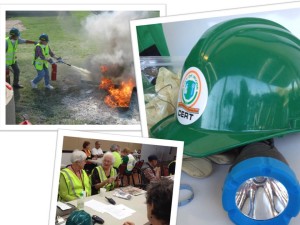 Some of the answers I got.
Some of the answers I got. Keeping CERT Training Interesting With a “Movie Night”
Keeping CERT Training Interesting With a “Movie Night”